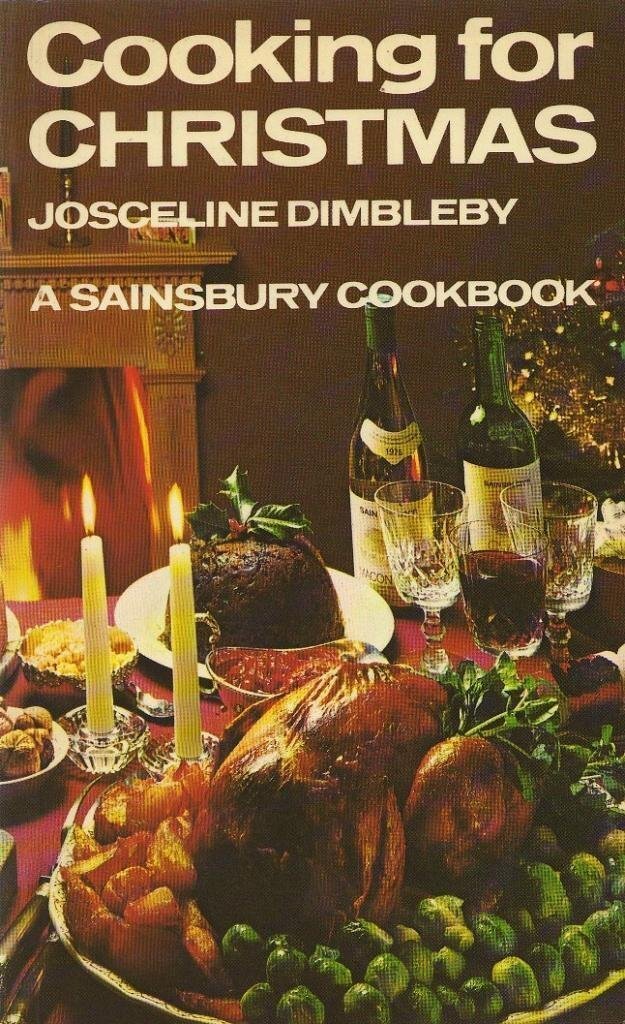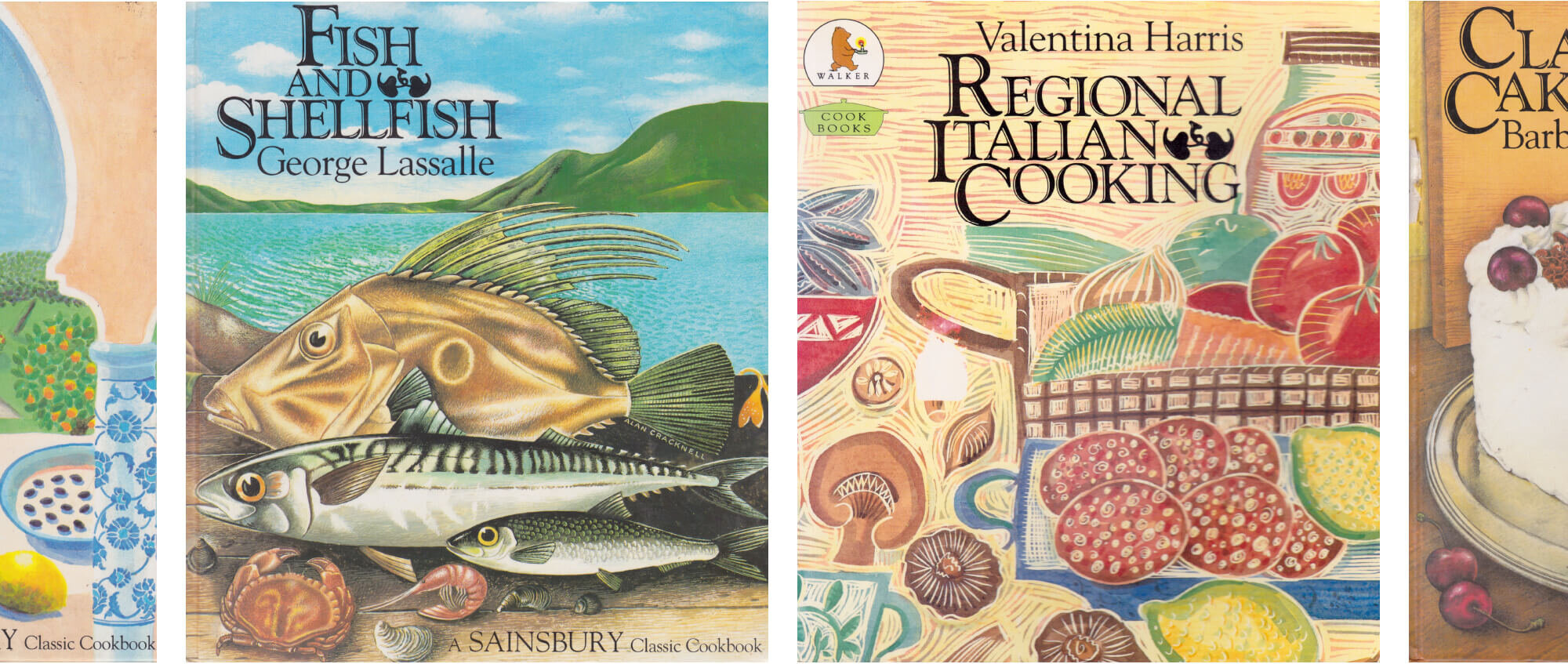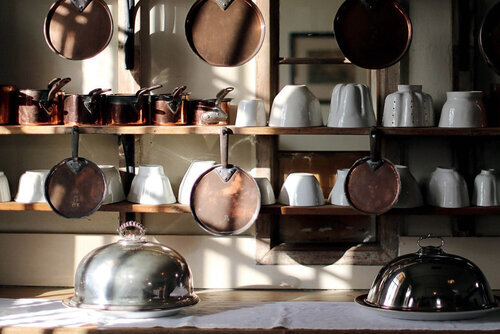Advertisement
Behind the Cookbook: The Sainsbury’s cookbook series
9 December 2021 · Behind the Cookbook
By Susan Low
In 1978, UK supermarket Sainsbury’s published Cooking for Christmas by Josceline Dimbleby. This title was the first in what was to become an extensive collection of cookbooks that over the coming decades would sell millions of copies. The books were written by some of the most celebrated figures in the food world, and well-thumbed, scribbled-on copies of these books are still in use in countless kitchens across the UK.
ckbk is working with the authors of these titles to make many of these much-loved cookbooks available once more via ckbk, and the following titles are already online:
Cooking for Christmas, Marvellous Meals with Mince, First Impressions and Sweet Dreams by Josceline Dimbleby
Pasta Italian Style and The Chocolate Lover’s Cookbook by Patricia Lousada
The Cooking of the Middle East by Claudia Roden
Additional titles from the series by Josceline Dimbleby, Patricia Lousada, Barbara Maher, Nathalie Hambro, Anne Willan and other authors will be appearing on ckbk soon.
How it all started
As is often the way, the cookbook series came about through serendipity rather than careful, strategic planning.
Josceline Dimbleby got things off to a start back in 1978, when the world of food – and supermarkets – was a very different place. “I knew John and Anya Sainsbury,” Dimbleby explains. “John was the chairman of Sainsbury’s at that time, and Anya, his wife, used to be a ballet dancer. Anya had my first cookery book, which came out in 1976 and was called A Taste of Dreams.”
At that time, cookbooks in supermarkets weren’t ‘a thing,’ but John Sainsbury saw the potential. He mentioned to Anya that he was thinking of publishing a series of cookbooks, and, as Dimbleby explains: “Anya said, ‘Why don’t you ask Jossy to do one?’ I suggested Cooking for Christmas because at that point, there were no cooking for Christmas books as there are now. It was a great success. It was such a good idea to put these little books, which cost 99p on the checkout. So they wanted to go on with more and said, ‘What next?’”
Next would be another successful title, Cooking With Herbs and Spices (1979). “I was brought up a lot abroad, so I really like using herbs and spices in my food,” Dimbleby says. “At that point [Sainsbury’s] had one little drum of dried mixed herbs and one little drum of mixed dried spice.” She agreed to write the book, with the proviso that Sainsbury’s would ensure cooks were able to get their hands on the ingredients she wrote about – a decision that was a precursor of what would come to be known as the Delia effect.
Capturing the spirit of the times
The book tapped into the late 1970s zeitgeist in other ways, too. “The moment when Cooking With Herbs and Spices came out was really the beginning of people beginning to do foreign travel,” says Dimbleby. “That’s when all of the package holidays started and people were tasting all this food. Everybody was ready for re-creating the tastes that they had had on holiday. Sainsbury’s were initially doubtful, not knowing if anyone would buy it, but it sold fantastically well.”
Dimbleby eventually wrote ten titles for the Sainsbury’s series. “I never meant to write cookery books,” Dimbleby muses now. “I never trained as a cook. I just had this sort of food imagination, and it was a way to be creative while I had very young children. They were wonderful books. They were very thorough, and I’m sure that it was part of their success. They were also very personal.”
It’s a time Dimbleby remembers with fondness: “I feel very proud to have started the whole Sainsbury’s thing. It was such a success. It worked brilliantly for many years and it was a very happy, good part of my life, too.”
Glynn Christian wrote a trio of books (coming soon to ckbk) for the collection in the 1990s. He agrees that the supermarket tapped into the tenor of the time: “Sainsbury’s cookbooks chimed exactly with the growth in holidays abroad and a huge interest in cooking generally, but in ingredients particularly. I saw the phenomenal success of my west London delicatessen, Mr Christian’s, as well as in the response to my recipes on TV [Christian appeared on BBC Breakfast Time three mornings a week at the time], and by the huge sales of my book Delicatessen Food Handbook. It was a genuine renaissance of food, cooking, and in what was becoming available in such supermarkets as Sainsbury’s.”
So, what does Christian believe it was that made the cookbook collection stand out? “The importance of the Sainsbury’s books is that they were in a place where people were thinking of food – one of the few instances of books being relevant to surroundings … Relevance, price and perfect point-of-sale means sales.”
Gaining momentum
Through the 1980s and into the 1990s, the series gained momentum. Top chefs and restaurateurs such as Anton Mosimann and John Tovey came onboard, as did a bevy of leading food writers of the time: Jane Grigson, Patricia Lousada, Elisabeth Luard… Filmmaker Ismael Merchant (a close friend of Madhur Jaffrey, and clearly very knowledgeable about food) penned Indian Vegetarian Cooking in 1992. The books gave voice to the best, most authoritative writers of the time.
Jill Norman edited several Sainsbury’s cookbooks published in the 1980s with Walker Books, commissioning the likes of Nathalie Hambro, Claudia Roden, Anne Willan, George Lassalle, and Barbara Maher. Norman says her aim was to deliver: “good quality, from writers who knew what they were talking about, and whose recipes figured one could trust. And good presentation.”
She clearly got things right. The books were so highly regarded that Norman won a Glenfiddich Food and Drink Awards Special Award for the series in 1987 – no mean feat, as the Awards, which ran from 1972 to 2008, honoured only the crème de la crème in food and drink writing.
So, why does Norman believe the books were rated so highly by the Glenfiddich judges? “Well, I think they were well conceived, they were written by people who knew what they were doing – and it was innovative. Sainsbury’s was the first supermarket who went in for a line of cookery books. They were small and inexpensive. I know when the first one came out, and I still working was at Penguin and we thought ‘Oooh, competition’.”
She continues, “I don’t know if winning the Glenfiddich Award made much difference to Sainsbury’s customers, but it seemed to be a very popular win because it was something different. Sainsbury’s were very forward-thinking and were backing good projects. They were very much focused on having books that helped them promote new foods to people – and that’s very important.”
Standing the test of time
For cookbook authors, few things are as rewarding as knowing that their work has hit home – that the time and effort put in to creating and perfecting recipes is appreciated by those who cook their dishes and feed them to their families.
In this regard, the recipes seem to have stood the test of time. “People still use them,” says Josceline Dimbleby. “And people still remember them – obviously they need to be a certain age to remember them, but their children remember growing up eating these dishes. And I’ve often been contacted by people who are even younger than my children are, who are middle-aged, who say, ‘Oh, every Christmas we used to have your mince pies,’ and they still occasionally write letters to me, and it’s terribly nice. There are certain favourites, I think. There’s a pudding called Mount Vesuvius, and damson ice cream that I used to make in Devon.”
Food memories, Dimbleby believes, have a powerful role to play, one that goes way beyond simply cooking and eating. “Those food memories are very important to people, and they’re quite emotional too. It reminds them of family life. I did a lot of literary festivals for my books Orchards in the Oasis and A Profound Secret. At two separate ones, women stood up in the question time at the end, holding one of my old Sainsbury’s cookbooks, and then burst into tears. They began by saying, ‘You’ve always been part of our life,’ then bursting into tears. I didn’t quite know what to say. Also when they came up to have the new book signed, they would bring me these incredibly old, stained Sainsbury’s books to be signed. It was really, really nice.”
Glynn Christian has had similar experiences. “Even now I get comments about recipes, he says. “I know the Pies, Pâtés and Terrines book has no competitor and has been used by many deli owners and caterers. Only recently a distinguished member of the Guild of Food Writers said my pâté recipe was her ‘go-to’. Nice after more than 30 years.” Nice indeed.
What the fans say…
Mini fan clubs have formed around some of the Sainsbury’s authors. Suffolk-based food writer Janet Davies of the Pigeon Cottage blog has an affinity for the recipes and books of Patricia Lousada, her Pasta Italian Style in particular. “This particular one about pasta is still, in my view, the best one in my extensive collection even after all these years … I still use her exact recipe for her Spaghetti alla Siciliana and Spaghetti alla Puttanesca today.”
And here is a bit of what the Twitter-sphere has to say…




Some books are quickly forgotten, but others stand the test of time. When you find a book that works for you, with recipes that you know you can rely on, or one that brings back memories of happy times, it becomes more than just a cookbook – it’s a trusted and treasured old friend.
If you have a favorite book from the series, let us know so we can work towards adding it to ckbk.
Related posts
Behind the Cookbook: Joanne Harris
Novelist Joanne Harris and food writer Fran Warde tell how they brought their skills and love of French food together for
The French Kitchen and The French Market.
Advertisement










